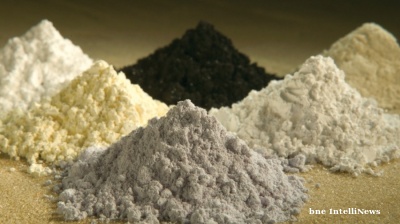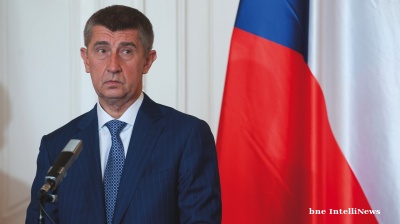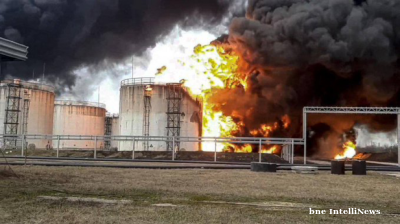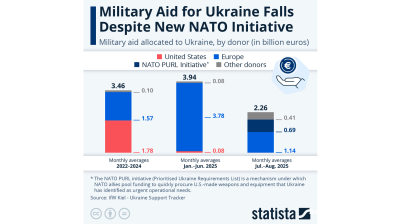Gas supplies from Russia have been a staple source of energy for Europe for years. However, Russia’s increasingly aggressive policies in Europe and further afield have prompted a search for alternative sources of gas. Liquefied natural gas (LNG) deliveries will start arriving in Europe from the US next year in significant amounts, but the new gas supplies come at a time when the global economy is cooling and depressing prices. The upshot is that a battle for market share between Russia and its competitors is about to break out.
Gazprom has traditionally not faced a significant amount of competition from alternative gas suppliers in Europe. The growth of renewable energy in the power sector and the emergence of cheap coal as a cheaper, if dirtier, alternative energy source has certainly undermined overall gas consumption and demand for Gazprom’s exports, with political drivers also leading to calls for diversification away from Russian supply.
However, declines in indigenous production in the UK sector of the North Sea and in the Netherlands, where output from the Groningen field was curtailed because of seismic activity, have allowed Russian gas exports to maintain their market share at around 30%. Indeed, the decline in Groningen's output since 2012, from a high of 54bn cubic metres (cm) to a 2015 level of 30bn cm, has been matched quite closely by the increase in Gazprom sales over the same period (which have risen by around 20bn cm). Furthermore, declines in North African gas exports following the political volatility in the region and increased LNG demand in Asia after the Fukushima accident in 2011 have also supported demand for Russian gas in Europe.
But this picture is starting to change due to the gradual emergence of significant volumes of new LNG exports from Australia and the US. Projects on the east and west coast of Australia will continue to come online and accelerate output in the period 2016-2018, while US LNG exports have recently started with the loading of the first cargo at Sabine Pass in the Gulf of Mexico and will also peak towards the end of the decade. Unfortunately, this new gas is arriving at a time when demand in Asia, which had been expected to grow rapidly driven by Chinese expansion, is starting to disappoint, meaning that Europe is set to become the market of last resort for any surplus LNG which is remaining. This LNG will therefore arrive at short run marginal (or cash) cost as suppliers seek to keep their projects operating, even if they are not making a return on their sunk capital investment.
As a result, Gazprom could face a significantly higher level of competition over the rest of this decade as US LNG in particular starts to arrive in Europe. The short-run marginal cost of this new source of supply is based on the US market (Henry Hub) price plus the cost of transport and regasification (with the cost of liquefaction being regarded as sunk and therefore ignored on a cash basis). At the current Henry Hub price of $1.60/mm btu, the industry standard price that acts as a benchmark for pricing future contracts, the delivered cost could be as low as $3.30/mm btu. And even if the US gas price rebounded to its 2015 average of $2.60/mm btu, the delivered cost would only rise to $4.54/mm btu, well below the average price of Russian gas in Europe last year (which Gazprom has estimated at $6.80/mm btu).
A key question, therefore, is how Gazprom will respond to this new challenge, especially as the prices in many of its European contracts are still linked to a factor outside its control, namely the oil price.
As the chart below shows, although Gazprom has made pricing concessions to its customers in the past few years, which have largely involved introducing links to European spot prices in its gas contracts, nevertheless there is still a clear correlation between the Russian gas price and the oil price, albeit with a six- to nine-month lag as stipulated in the pricing formulae. This has often resulted in Gazprom’s price being relatively high and uncompetitive, leading to arbitration cases with customers who want a market price, legal disputes with the European Commission which regards oil-linked pricing as unfair, and encouragement to power generators to use cheaper coal.
Russian gas price in Europe compared to oil price
 Source: Data from Argus Media
Source: Data from Argus Media
However, over the next six months the oil price link will actually help Gazprom’s gas stay competitive, as the lag effect will mean that by the third quarter of 2016 the price of Russian gas in Europe will reflect the oil price at the start of this year, when it fell to below $30 per barrel. As a result, the Russian export price could fall below the cash cost of US LNG, even if the Henry Hub price stays at its current very low level. In one sense then, a price war is inevitable, as commercially rational customers will look for the cheapest source of supply and will find that Russia’s oil-linked tariff offers a very attractive price.
Yet the chart also highlights the subsequent rebound in the Russian gas price by the end of the year, driven by the current recovery in the oil price to $40 per barrel. While ostensibly this is good news for Gazprom, in reality it will make its gas uncompetitive again and will open the door for US LNG to attract more European customers, who will then exercise their right to reduce their purchases of Russian gas thanks to the flexibility offered in Gazprom’s contracts.
Gazprom will then have a clear choice to make: either to maintain its price and lose market share, or to adjust its price and keep sales volumes up. The company has openly stated that it does not want a price war (why would it?), but it also said that it wants to maintain at least a 30% market share in Europe and that it will compete with US LNG on cost. This certainly sounds like the recipe for price-based competition, and it could have the further long-term benefits of both appeasing the European Commission and making Russian gas more competitive with cheap coal in the power sector.
Grounded
An important question, though, is whether Gazprom can afford a competition down towards the short-run marginal cost of US LNG. The answer is not straightforward, as it is a moving target based not only on what happens to the US gas price, but also on the level of the Russian ruble versus international currencies.
The dramatic devaluation of the ruble over the past 18 months has been driven by the lower oil price, to which it is highly correlated, and it has helped to reduce in dollar terms the level of any costs which are domestically priced. In Gazprom’s case this means lifting costs, domestic royalties and domestic transportation. The benefits of the devaluation mean that at the current exchange rate of RUB71 to the dollar, Russian gas has a cash cost (delivered to Europe) of just over $4/mm btu – low enough to provide some stiff competition to US LNG, especially if the Henry Hub price rebounds, or if the ruble weakens again towards its 2016 low of RUB80.
However, to exploit its low-cost supply Gazprom will need to change its marketing strategy and end the link of its gas price to oil. It will also need to become more actively involved in European hub trading and accept that its gas will be priced relative to the European spot price. We are seeing signs that the state-controlled company, and the Kremlin, are gradually edging in this direction, with the power of the European market and its regulators being grudgingly acknowledged. And the decline of oil prices has already forced Gazprom to renegotiate many of its contracts over the last two years.
Tensions went up a notch in April 2015 when the EU formally charged Gazprom for violating competition regulations and pushing up prices in Poland, Hungary and six other countries in Emerging Europe. This saw the start of the biggest antitrust case ever launched by the commission against a state-controlled company from outside the EU. But in September last year Gazprom offered to settle the EU’s antitrust case out of court and move on. Earlier the same month Gazprom held its first ever auction of gas supplies on the spot market after working for years under the long-term contracts. It has also returned to a multi-billion-euro asset swap deal with Germany’s BASF that it had previously abandoned amid the tension in the relationship with EU.
Indeed, a resolution with the European Commission over its current investigation and a conclusion to a long-standing arbitration case with German utility Uniper may be the catalysts for a broader change in Gazprom’s strategy in 2016 that could see its prices become more market-based and competitive. If not, then Gazprom could find itself losing its place in the European market to LNG.
For a country such as Russia, which has a similar position in the European gas that Saudi Arabia has in the global oil market, this would not seem like an optimal long-term strategy to maximise the potential economic benefit from its pre-eminent gas resource base, given that the global energy economy plans to move away from fossil fuels, creating the risk that in the foreseeable future much of this endowment could be stranded and “unburnt” in the ground.
Dr James Henderson is Senior Research Fellow at Oxford Institute of Energy Studies and Senior Energy Advisor, Trusted Sources
Opinion

IMF: Global economic outlook shows modest change amid policy shifts and complex forces
Dialing down uncertainty, reducing vulnerabilities, and investing in innovation can help deliver durable economic gains.

COMMENT: China’s new export controls are narrower than first appears
A closer inspection suggests that the scope of China’s new controls on rare earths is narrower than many had initially feared. But they still give officials plenty of leverage over global supply chains, according to Capital Economics.

BEYOND THE BOSPORUS: Consumed by the Donald Trump Gaza Show? You’d do well to remember the Erdogan Episode
Nature of Turkey-US relations has become transparent under an American president who doesn’t deign to care what people think.

COMMENT: ANO’s election win to see looser Czech fiscal policy, firmer monetary stance
The victory of the populist, eurosceptic ANO party in Czechia’s parliamentary election on October 6 will likely usher in a looser fiscal stance that supports growth and reinforces the Czech National Bank’s recent hawkish shift.




